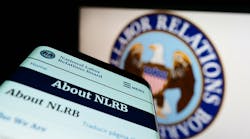Data from the 2012 Report to the Nations on Occupational Fraud and Abuse paint a clear picture of the challenges facing CEOs. Addressing the current corporate climate, Thomas Martin, president of Martin Investigative Services, advises CEOs to be cognizant that employees may be actively engaging in stealing time, money or products from the company.
“Deviant behavior such as corporate theft, occupational crime and dishonesty are draining business profits,” said Martin. “Based on research conducted by Martin Investigative Services, the rate in employee theft steadily held at 15 percent from 1969 to 2006. This figure began to skyrocket during the third quarter of 2006 to an alarming 75 percent in 2012.”
Martin offers five tips every CEO must know to combat employee theft:
Conduct Background Checks on Employees- Background checks on employees will help reduce the risk of fraud, embezzlement, substance abuse and criminal activity within the business. New businesses are particularly vulnerable.
Watch for Red Flags– Lifestyle changes are a big red flag. Things to consider: falsifying records, petty theft, accounting misconduct and family partnerships which are not being audited.
The Value of an Independent Evaluation- A comprehensive security risk analysis by a corporate security firm will provide an objective look into the company’s security system and structure and will provide specific solutions that can be implemented.
Interview and Interrogation Process - Conduct a series of interview and interrogation sessions using former supervisory federal agents who work independently in the private investigation industry. Interviews and interrogations are less costly and more effective than undercover investigations, Martin says.
Court Admissible Evidence – In all cases of surveillance—evaluation, interview and interrogation—the statement collected should be diligently prepared for use as evidence for judges and juries to review. If the information cannot qualify as evidence in a court of law, it does not meet the standards of accuracy and professionalism expected in any legal context.




